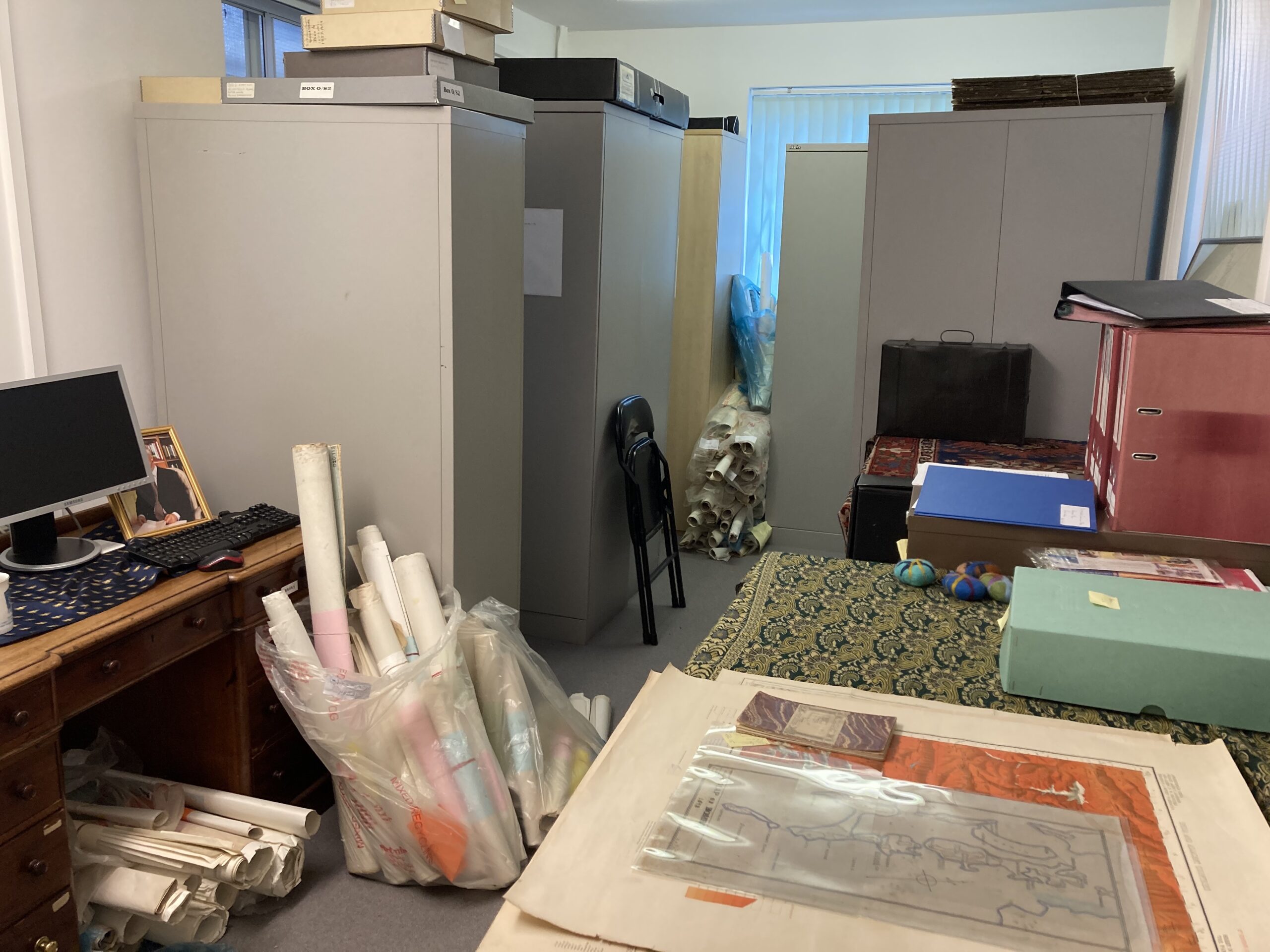The Oxus Expedition was born in 2020 in London. Or was it? Arguably it has been more than 100 years in the making, and this is its latest incarnation. Either way, the Royal Society for Asian Affairs has a lot to answer for!

I call this “The Room of Requirement”. In fact, it is the archives of the Royal Society for Asian Affairs (RSAA). But just like its namesake at Hogwarts, it’s impossible to know exactly what is inside. You step through the door with a question, or a problem, and somewhere inside will be the solution. It could be a map, a photograph, a glass slide, or a hand written letter; or it could be a life-changing idea.
In January 2020, on a cold and miserable day, I went into the archives looking for early 20th century photographs of Tajikistan’s historical sites. At least that’s what I thought I was looking for. The Room of Requirement knew better. Instead, I left with an arm load of maps of the Wakhan Corridor and a copy of Lord Curzon’s The Pamirs and the Source of the Oxus. It was time to start preparing for the ultimate Oxus Expedition.
The RSAA was founded in 1901 as the Central Asian Society. It was at the height of “The Great Game” (or, as the Russians prefer to call it, “The Tournament of Shadows”) when the imperial British and Russian powers were competing for influence and territory in Central Asia. Afghanistan and what are now the five Central Asian republics — the ‘Stans — was their battleground.
But in the campaigns they led here, diplomacy and espionage were even more important than physical warfare. The heroes of the day were just as likely to be bureaucrats, geographers, and spies as they were to be military officers, though there were plenty of them as well. When they returned to London (or, in the Russians’ case, to Saint Petersburg), they wanted somewhere to meet like-minded people with shared experiences, to be able to discuss privately what could not yet be in the public domain, and to archive their materials for posterity. The Central Asian Society (which became the Royal Central Asian Society in 1931, and in 1975 changed its name to the RSAA) was founded by Dr Cotterell Tupp, Captain Francis Younghusband, Colonel Algernon Durand, and General Sir Thomas Gordon to meet this need. Lord Curzon was one of the earliest members.
Every major Great Game expedition and related geographical discovery was reported at an RSAA public lecture and recorded in the journal Asian Affairs. Hand-drawn and printed maps, letters and memoirs, sketches glass slides, and photographs were conserved for future use in the archives. The library grew and grew. And on the walls hung the great horns of a Marco Polo sheep, the emblem of the society. Most important of all were the materials linked to the source of the River Oxus in Afghanistan’s Wakhan Corridor, because that was the agreed frontier between the British and Russian Empires. It was these same materials I chanced upon in 2020, and from which I realised that the true source of the river was still to be proved.